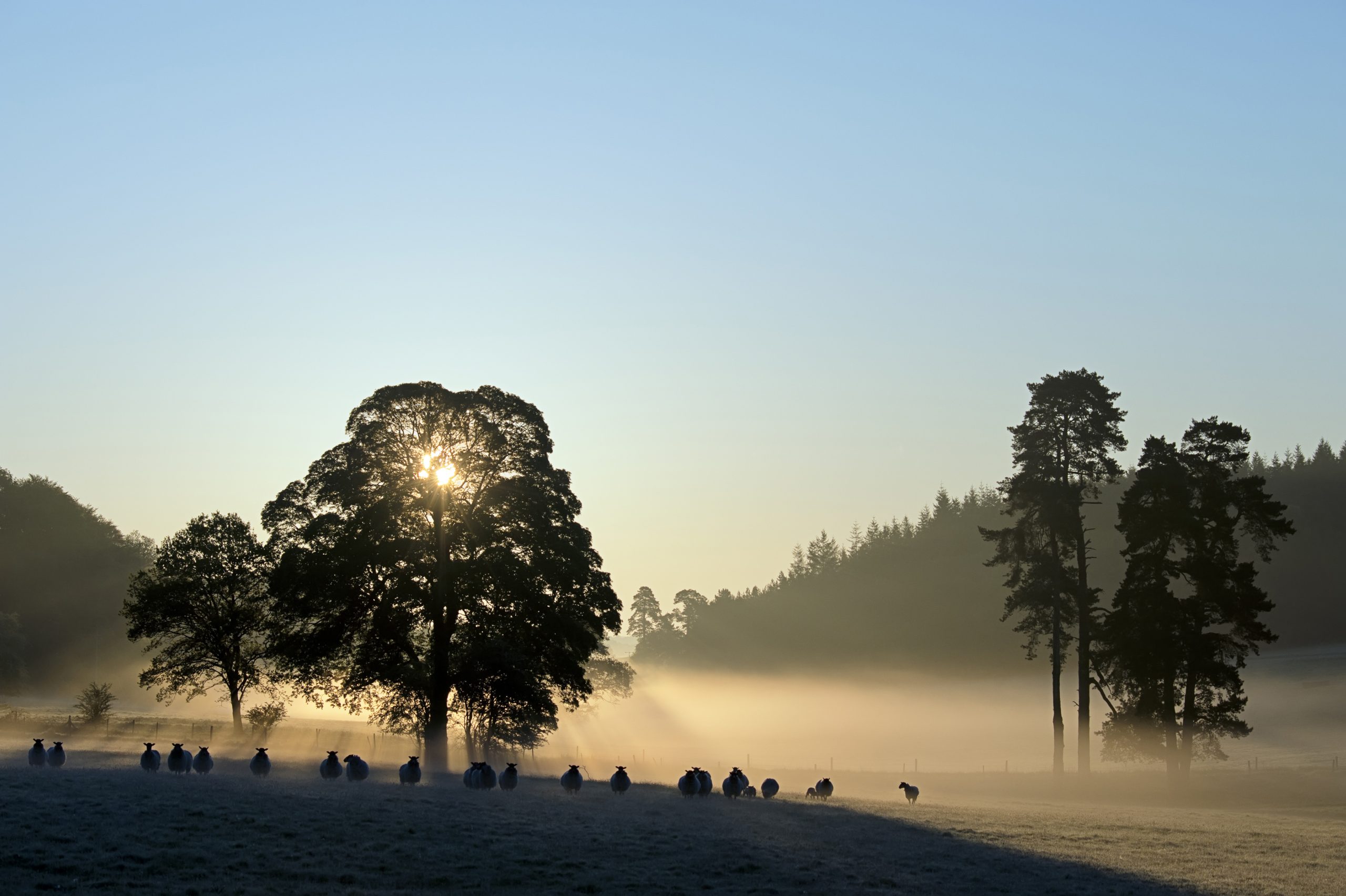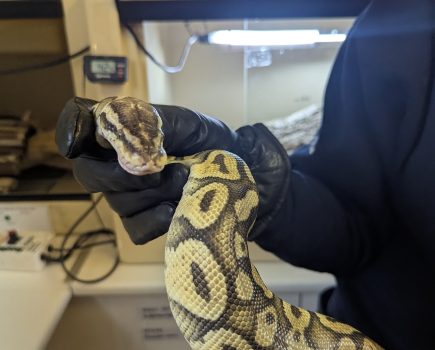Lead image: Planting trees for wildlife and the environment. © Chris Addison-Scott/WTML
This article was paid for by The Woodland Trust
Biodiversity is an increasingly hot topic within the agricultural sector. Stuart Holm, arable farmer and Outreach Manager at the Woodland Trust, shares his approach to improving farm resilience and biodiversity on his land.
Research shows biodiversity on UK farms has fallen to around 30% of 1970 levels. Intensive farming practices including chemical usage, frequent cultivation and the loss of UK hedgerows, orchards and wild spaces are all contributing factors. Farmland accounts for 71% of the UK countryside, so getting biodiversity right is an essential part of addressing the climate, nature and food security crises.
Q: So Stuart, could you talk us through the composition of your land?
Sure, I’ve got about 200 acres in Leicestershire that I mainly farm through a contractor. We’re predominantly arable – pretty much all combinable crops – with some ridge and furrow. We also have about 40 acres of woodland including some SSSI ancient woodland, that we manage in-house. Around a third of the fields are grass strips and margins to try to help with run off, which is a particular challenge in the area due to heavy clay soils.
Q: You mentioned water run-off, what kind of effect has that had?
Well, a large part of the land is in grass strips and margins to accommodate the semi-regular flooding. We have a number of silt capture ponds, which are designed to help reduce soil erosion and nutrient loss. These work by capturing the soil particles from the water before it flows off the farm. As well as some leaky dams – made with natural materials – which were built in partnership with the Allerton Trust a couple of years ago and help to slow the flow of the water courses during flash flooding. Soil degradation and erosion is a huge challenge. Along with compaction, it’s estimated to result in losses of about £1.2 billion a year and damages the productivity of UK soils for food production. It’s not uncommon for farmers to lose thousands of tonnes of soil per year in run-off of nutrient dense soil. We’re trying through margins, grassland, and silt capture ponds to limit that.

Trees provide much-needed shade and shelter for livestock. © WTML
Q: What’s your approach to soil health?
Within the agriculture sector I think we all know that if you can get your soil right it has huge benefits for the overall land health and farm business. In previous years, like many other farmers, we took it for granted that we always needed to put a certain amount of fertiliser, pesticides or herbicides on the land. But as regenerative agriculture is gaining traction, it’s really changed our approach. We test the soil condition for nutrient levels around every 4 years now so we can be sure that we’re only adding fertiliser where it’s really required. We’ve applied the same approach with herbicides and pesticides too, which we know will have a positive impact on the land from the reduction in chemicals. We’ve managed to make some savings from a financial perspective as well, which has been particularly welcome given the recent volatility of fertiliser prices.
Other than that, we’re trying to take steps to a move towards sewage sludge, chicken manure and green manures. This year we planted a mixture of black oats, clovers and phacelia as overwintered cover to help improve soil condition. There have been limited impacts on the yields so far, but it will add to the soil structure and help towards healthier soils in the future.
Q: Do you have any advice on improving biodiversity and farm resilience?
One of the biggest opportunities for improving biodiversity is tree or hedge planting, because of the diverse range of species trees support. Though we’ve planted a small area next to the silt capture ponds, we’ve taken the decision not to plant lots of new trees on our land because we’ve already got woodland cover over such a large proportion. But where that’s not the case, farms can really benefit from the introduction of new trees in helping to build overall resilience.

The Woodland Trust has decades of experience working with farmers to reap the benefits of trees. © Philip Formby/WTML
The Woodland Trust’s MOREwoods and MOREhedges schemes are a great introduction to tree planting because there’s much less paperwork involved compared with other schemes and you’re able to start with planting a much smaller area. The minimum planting area is just 0.5ha which can be split into smaller parcels to support farm goals. Whether that’s designing shelterbelts to protect crops and livestock from extreme weather, or even providing an alternative food source in the form of tree browse to the provision of habitats for wildlife, including pollinators and beneficial insects.
With tree planting it’s important to look at the opportunities from a whole farm perspective, to make sure that you’re adding value to the farm rather than taking land out of production. It’s definitely possible to find a good balance though, and putting the right tree in the right place can have significant benefits. Our new planting has been used to soak up excess water and bind the soil around the edges of the silt capture ponds – but each farm is different, and it’s important to tailor a solution to fit the challenges of the individual land and develop a holistic sustainability strategy.
Ready to start your planting journey?
Trees should be in every farmer’s toolbox. They boost productivity, resilience and the health of the environment – with no need for trade off in food production. With MOREwoods and MOREhedges you receive up to 75% of the cost of woodland and hedgerow creation plus the support and guidance you need to make your project a success, from site suitability and species selection to planting, tree protection and management.
The Woodland Trust has already planted over 4,000 hectares of woodland via the schemes – that’s millions more trees creating a brighter, healthier future for businesses, communities and nature.
All landowners and land managers are welcome to apply providing the following eligibility criteria are met – all you need is a grid reference and a map of the area to be planted.

Speckled wood butterflies and other pollinators support sustainable food production. © John Bridges/WTML
MOREwoods

MOREwoods is funded by Lloyds
MOREwoods is designed to create new habitat for wildlife across the UK. Eligible projects must plant:
- At least 0.5 hectares of new woodland and
- 1000-1600 trees per hectare.
The area can be made up of multiple smaller blocks of at least 0.1ha each.
MOREhedges
MOREhedges is designed to create new ecological links with woodland in the surrounding landscape. At least 100 metres of hedging must be planted in a single run and connect with:
- At least 0.2 hectares of existing or newly planted woodland, or
- Woodland via established hedgerows within 500m of the new hedge.
Find out more and start your planting journey woodlandtrust.org.uk/morewoods
The Woodland Trust is a registered charity (294344 and SC038885). The Woodland Trust logo is a registered trademark.








